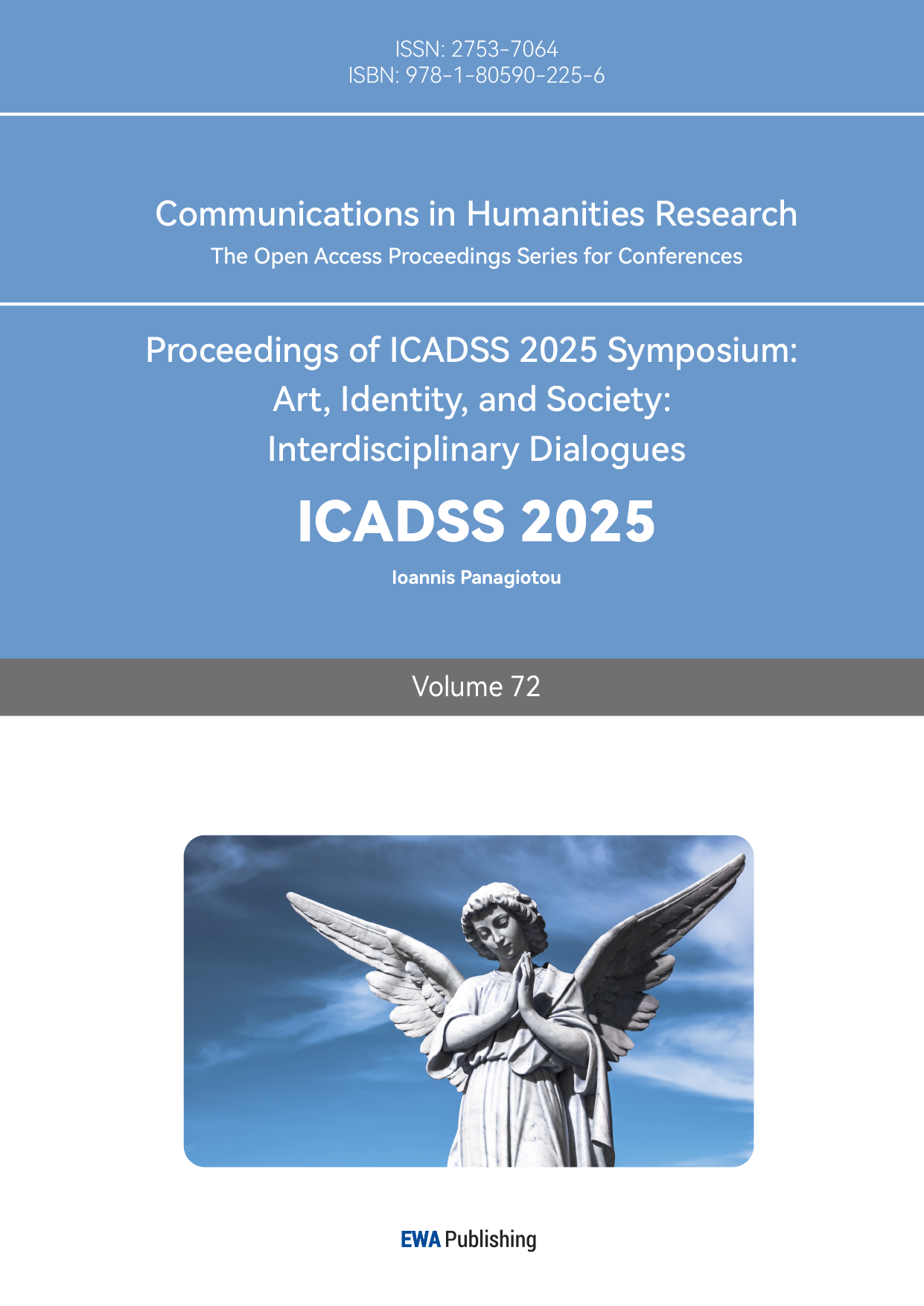1. Introduction
The 55th Statistical Report on the Development of Internet in China released by China Internet Network Information Center on January 17, 2025 shows that by December 2024, the number of Internet users in China has reached 1.108 billion, the Internet penetration rate has risen to 78.6%, and the mobile Internet access rate has reached 99.7% [1]. The rapid development of China's entertainment and cultural industry has led to the emergence of a large number of entertainment stars and their fan base. As the fan economy enters the 4.0 era, the relationship between fans and idols is also redefined: the voice right of the fans has been significantly strengthened and they also have the right to participate in decision-making. In the social media represented by Weibo, Tiktok, Xiaohongshu, etc., a series of fan behaviors involving a large number of fields have an unprecedented impact on social, cultural, economic and other fields.
“Fan Circle” is an internet slang term that refers to an organized and specialized interest group, evolving from spontaneously formed fan communities centered around celebrities [2]. Due to its high level of organization, strong mobilization capabilities, and emotional intensity, fan circles frequently trend on social media through various forms of online engagement. Fan circles exhibit a distinctive “fan-circle culture” that showcases the lifestyle and behaviors of their members, including standardized norms for idol worship, unique language systems, and well-defined hierarchical structures. “Fan-circlization” refers to the process by which casual fan groups transform into highly organized fan circles. The “fan economy” is distinct from the “fan-circle economy.” While the fan economy arises from spontaneous individual consumption behavior, the fan-circle economy is driven by collective, organized efforts. The fan-circle economy can be defined as a systematic form of economic activity emerging from fan communities with shared interests and motivations.
A healthy fan circle can strengthen social bonds and foster mutual growth and positive influence among its members. In contrast, unhealthy and irrational fan circles may give rise to negative social consequences. An ideal competitive sports ecosystem should be an organic system rooted in fair competition, diversity, and sustainable development. While preserving the purity of sportsmanship, it should also adapt to the commercialization and popularization demands of modern society. However, in recent years, as the influence of “fan circle” culture has swept from the entertainment industry into the realm of sports, several fan-circle phenomena have emerged within the sports field. These include the emergence of so-called “strange phenomena,” such as athletes being valued primarily for their internet traffic and media exposure, rather than their athletic performance. The evaluation of athletes increasingly depends on the size of their social media fan base, and public discourse often shifts focus from their achievements on the field to their personal lives.
2. The “Fan-Circle” culture phenomenon in competitive sports
“Fan-Circle Culture” refers to the idol-focused, highly organized fan behaviors originally rooted in entertainment fandoms, now spreading into sports. The "Fan-Circle Culture" in competitive sports refers to the behavior pattern of some sports fan groups imitating entertainment star fans, transplanting the logic of idol worship into the sports field, and forming an overly emotional and irrational fans culture phenomenon. This culture has rapidly spread in the era of social media and has had a complex impact on the sports ecosystem.
Sports “Fan-Circle Culture "refers to a phenomenon similar to entertainment fan culture that has emerged in the Chinese sports industry in recent years. It idolizes sports athletes and forms a series of fan behaviors and subcultures around them. For example, although table tennis, as a national sport, has always had a wide public base and attention, but the infiltration of “Fan-Circle culture " has injected new vitality into it, but it has also brought some controversies.
The main manifestations of sports fan culture are as follows:
Firstly, fans spontaneously form support groups, personal websites, data groups, and other organizations to carry out organized support activities. In order to form a sense of identity, they will unify their names, slogans, supporting colors, etc. The support groups is usually responsible for organizing offline matches, airport transfers, aid production, birthday support, and other activities, the personal websites focuses on taking high-definition photos and videos of athletes, and refining and editing them, then posting them on social media. And the data groups is responsible for ranking, controlling evaluations, and combating blacklisting for athletes on various platforms to maintain the image and online reputation of athletes.
Secondly, fans will go to the competition venue, they usually will unify their costumes, hold up lanterns, shout slogans, and cheer for the athletes. They will also make exquisite aid objects, such as banners and human shaped standing signs etc. Fans will create topics, forward trends , comment and demand” likes” for athletes on social media to increase their popularity and attention. They will also participate in various ranking activities to strive for honor and resources for athletes. On the athlete's birthday, fans will organize large-scale support activities, such as making billboards, hairing large screens, and producing support videos, etc., to express their love and blessings for the athlete. Fans will purchase products and merchandise endorsed by athletes to express their support and love. Some fans will also raise funds to support athletes' competition results, public welfare activities, etc. Other fans even purchase luxury items as gifts for athletes. Fans will maintain the image of athletes on social media, arguing or even tearing apart with other fan groups or haters. They will try to guide public opinion and control evaluations and discussions about athletes. Some extreme fans may even attack athletes or other public figures who compete with their idols.
2.1. The impact of fan-circle phenomena on competitive sports
The “Fan-Circle culture "in competitive sports has brought some negative impacts while promoting the development of sports.
Taking table tennis as an example, the positive impact is reflected in the emergence of fan culture, which has attracted more young people to pay attention to table tennis and injected new vitality into this traditional sport, enhancing the attention and influence of table tennis; The rise of fans economy has brought more business opportunities and income to table tennis players, it promoted the development of the table tennis industry, and propelled the commercialization of table tennis; The support and love of fans can motivate athletes to train and compete harder, strive for better results, and enhance their sense of honor and responsibility.
The negative impact is that “Fan-Circle culture " tends to excessively entertain competitive sports, shifting the focus from the competition itself to the personal lives and gossip of athletes; The irrational behavior of some fans, such as private meals and online violence, can cause trouble for athletes and even affect their training and competition status. Some negative practices in “Fan-Circle culture ", such as comparison, tearing, and excessive consumption, may have a negative impact on teenage fans and form distorted values.
2.2. Analysis of the forming reasons for "fan-circlenization" in competitive sports
2.2.1. Driven by commercial capital
Sports brokerage companies actively create "sports idols" and create sports stars through sports commercialization. Due to the positive and uplifting spirit conveyed by sport stars, which is more recognized by mainstream society, it makes sport stars become the focus of the public attention. Driven by commercialization, some commercial companies favor these sport superstars to endorse their products. They sell their products through various means, and they expand brand awareness and market share by using the popularity and influence of sport stars. That enhance the image and commercial value of the sport stars. For example, Gu Ailing received endorsement invitations from major brands after winning a medal at the 2022 Beijing Winter Olympics, and she had become the hottest athlete of the year. The natural and beautiful emotions displayed by sports stars are favored by consumers, and those ,which they have shown their relatively stable image and professional spirit reflected in different professional fields ,are exactly the image that the brand wants to shape. It is the win-win choice between brands and athletes that has brought a large number of athletes into the audience's sight, with high exposure and attracting a large number of fans' pursuit [3].
2.2.2. The popularity of social media
With the development of science and technology, social platforms such as Weibo, Tiktok and Xiaohongshu emerge one by one. The popularity of social media has provided favorable conditions for the formation of “Fan-Circle culture " in sports .When sports stars go abroad to Participate in sports events, fans will spontaneously gather at the airport to pick them up, they upload the athlete's itinerary to various social media platforms for fans to repost and collect, so fans can instantly access information and updates about athletes. In addition, social media is also an important channel for communication between fans. For athletes they both like, these fans spontaneously gather together to form a certain scale and influence, and there is also a professional operation mode to control the ranking and evaluation of athletes that one likes. For competing athletes, it will evolve into a phenomenon of crazy confrontation between fans on both sides. Once the behavior of fans exceeds the reasonable scope, it will evolve into an uncontrollable form of group online violence [4].
2.2.3. Psychological needs of younger fans
Young fans are in a critical period of mental development, they are short of sufficient discernment and judgment ability, and they are easily affected and misleaded by external factors. The younger age of fans means that this group of fans is often more extreme and fanatical, they are short of the judging ability to the right and wrong views, and they are easy to make some extreme remarks and behaviors.
On the other hand, the young fans are prone to impulsive and excessive consumption, because they have not yet established the correct values and money concept. They have no the bility to make money with their own, most of them obtain the capital of idol worship from their parents, and also they are becoming tools for businesses to chase after costs and profits. Young fans have not established a complete personality, during the pursuit stars, they often transmit the ideal persona to their idol. Their desire for self-identity creates a certain emotional attachment to their idols, it is satisfied with their need for a sense of identity and belonging, and at the same time, it also alleviated the panic caused by their lack of sense of reality [5].
2.2.4. Internet celebrity
Because of the influence of the trend towards entertainment, Sports stars's own responsibilities can easily give way to economic interests, especially under the halo of fans' pursuit, some athletes find it harder to resist temptation and exhibit self lost behavior [6]. Under the current trend of internet celebrity economy and entertainment, sport stars are gradually using their own honor and popularity to maliciously seek benefits on online platforms. Sport stars use their own popularity and the pursuit of fans to build themselves into internet celebrities who gain traffic and commercial value. This can be eliminate the nature of the sport stars who are playing an important role in promoting the Olympic spirit.
2.3. The Difference between the sports "fan-circlenization" and traditional sports culture
The reason why “Fan-Circle culture" has been able to enter the sports circle is partly benifit from the rapid development and construction of basic sports in recent years, in this condition, more and more people are willing to join it. That lead to the rapid development of sports marketization and commercialization; On the other hand, it also indicates that China's top athletes have performed well in competitions, and based on it ,the sport stars are becoming increasingly popular so that the halo and traffic of sports stars bringing glory to the country is perfectly aligned with the information fermentation mechanism of the short video era.
However, the difference between “Fan-Circle culture "and traditional sports culture enthusiasts is very obvious. The “Fan Circle' has strong exclusivity, fans need unconditional support for idols and cannot tolerate any criticism. They do not allow others to interfere little. In this situation, fair and objective competition discussions become a black-and-white "control evaluation" and "team positioning". Even some people violate athletes' personal privacy and insult them offline, seriously affecting their lives, training, and competitions [7]. The differences between fan culture and traditional sports culture are shown in Table 1.
|
Dimension |
Fan-Circle culture |
Traditional Sports Culture |
|
focus to be conceed |
Idol Personal (appearance、private life) |
Competitive performance (skills、tactics) |
|
Behavior pattern |
Data ranking、Control evaluation |
Discuss skills and tactics 、Support the team |
|
organization form |
Strict hierarchy relationship (fans leader-nomal fans) |
Loose community (Fan Association) |
|
Emotional expression |
Overprotection (“No criticism allowed”) |
Rational criticism (“a review for losing”) |
3. Analysis and research of the typical case
In order to better analyze the hot topics and user characteristics of social media websites in the field of competitive sports, this article takes Weibo user data as a typical case and uses web crawling technology to crawl user data and study the basic statistical indicators, obtained the dominating set of Weibo user comment area data, counted the corresponding question tags and keywords in the comment area, and analyzed them [8-9].
3.1. Analysis of Weibo comment area
According to a report on China News Network's Weibo account, on the afternoon of July 31, 2024 Beijing time, in the men's singles 1/16 final of the table tennis event at the 33rd Paris Olympics, Chinese player Wang Chuqin was defeated by Swedish player MOREGARD Truls and unfortunately stopped in the round of 32. After the report was released, it suddenly became a hot search on Weibo, and there are various voices echoed in the comment area. Figure 1 shows the emotional word cloud of the top 500 comments in the comment section. Among them, Figure 1a) shows the positive comment word cloud, and Figure 1b) shows the negative comment word cloud.
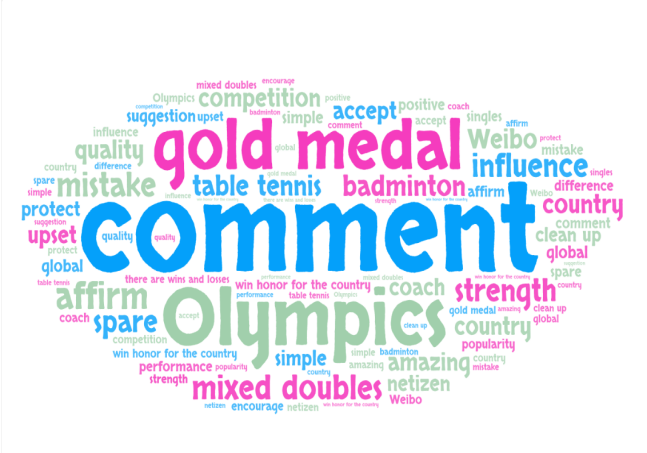
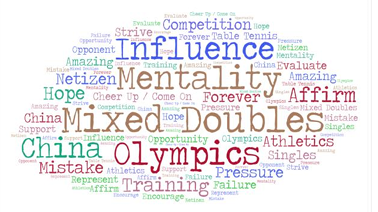
As can be seen from Figure 1, About Wang Chuqin, he was eliminated from the round of 32 in this Olympic Games, the fans' positive and negative comments are evenly matched, with no difference. Some hold a positive attitude, they believed that as long as Wang Chuqin can timely summarize the reasons for this defeat, identify problems, and analyze them, it will have guiding significance for future competitions; And the other part holds a negative attitude, they thinked that Wang Chuqin is not mature enough in his competitive mentality and he can not take on such a heavy responsibility in competitions fighting for national honor. At one point, they even suspected that there were problems with the selection mechanism of the coaching staff. The phenomenon of "gold medal theory" has emerged.
3.2. Analysis of the Blogger's comment area
On October 12, 2024, Beijing time, in the quarterfinals of the 27th Asian Table Tennis Championships men's singles, Chinese player Wang Chuqin lost 1-3 (8-11/11-2/8-11/6-11) to South Korean player Wu Juncheng, missing out on the semifinals. After the message was sent out, most of the fans in the blogger's comment section held a negative attitude. Figure 2 shows the statistics of the top 100 comments in the comment area.
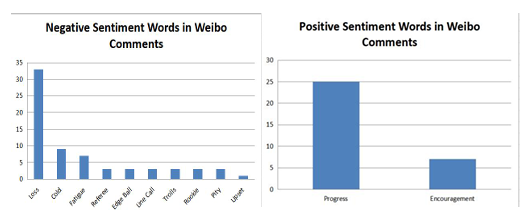
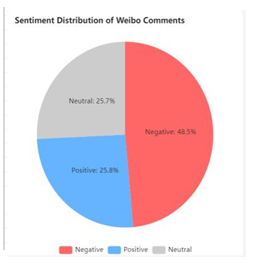
Figure 2 shows that 48.5% of fans hold a negative attitude in the comment area, they expressed concerns and doubts about Wang Chuqin's technical ability and competitive state, and the most frequently used words in their comments are "losing", "being upset", and "fatigue"; 25.7% of fans maintain a neutral attitude;only 25.8% of fans hold a positive attitude towards encouragement and affirmation.
Analysis shows that, among the comments of fans with a negative attitude, what we see is not respect for athletes, but extreme fans who are addicted to the “Fan-Circle culture,” They stir up conflicts and create opposition on the internet, incite people's emotions online, and that having a negative impact. to the competitive sport.
After the same tweet was posted, the most of fans in the comments area of another blogger remained neutral. Figure 3 shows the statistics of the top 100 comments in the comment area.
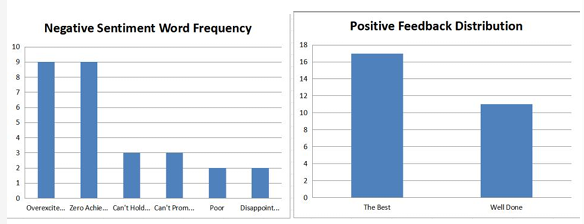
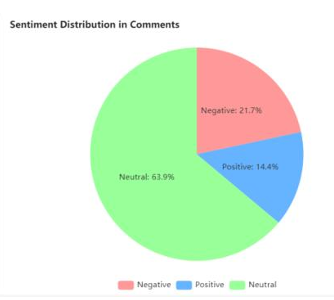
As shown in Figure 3, 63.9% of fans in the comment section hold a neutral attitude; 21.7% of fans have negative emotions, and the main keywords in their comments are "too excited", "zero crown", "unable to seize opportunities", "incompetent", etc. and 14.4% of fans hold a positive attitude. The number of fans who hold a neutral attitude in this comment has increased, which should be closely related to the recent measures taken by the public security network security department to crack down on illegal and criminal activities related to the "Fan Circle" in the sports field in accordance with the law.
In summary, the spread of “Fan-Circle culture” in the sports and its erosion, infiltration, and impact on the competitive sports ecology cannot be ignored. Sports competition is not only about results, but also about sportsmanship. Honor, sweat, and tears should not only belong to one or a team of athletes, but to everyone on the field. That's also why the trend of "Fan-Circle" has caused a strong backlash in the sports field. Winning or losing on the field is a common occurrence, and fans certainly hope that their supported athletes can win, but they should also learn to face it correctly. To pay attention to sports, one must be mentally prepared to bear the consequences of winning or losing. This is precisely the charm of competitive sports. Every fan should maintain the correct attitude towards competitive sports and leave a pure land for these athletes to dare to fight and fearlessly strive. Therefore, it is necessary to guide fans to pursue celebrities rationally, create a healthy and positive sports atmosphere, and bring sports back to the essence of competition. Only in this way can sports continue to develop healthily and better inherit the spirit of sports.
4. Discussion on the governance and regulatory path of sports "fan-circlenization"
A healthy competitive sports ecology should be like an iceberg, above the water surface, there are top competitions and celebrity athletes attractting public attention; Underneath the water there are solid youth training, fair rules, rational audiences, and sustainable business models as a foundation. Its ultimate goal is not to create "traffic idols", but to cultivate resilient, collaborative, and rule respecting personalities through sports, and to build a positive public cultural space. It can make sports truly become a catalyst for social progress only by returning to the essence of competition and balancing the interests of all parties [10-11].
How to find a balance between maintaining the purity of sports and adapting to the new media era will become an important issue in the future. Extreme “Fan-Circle culture” emerged and flourished due to the internet. So network platform monitoring is a fundamental step in monitoring the behavior of extreme "Fan Circle" groups and promptly eliminating their negative impacts [12]. This article proposes the following governance and regulatory paths for the sports fan circle:
Firstly, increasing the governance capability of cyberspace. Taking the "Clear Action" as an opportunity, establish a governance working group. The government should strengthen its attention to the governance of the chaos of "Fan-circlenization" among sports fans, and should pay attention to the significant importance of addressing the deviant behavior of sports fans' "Fan-circlenization" in promoting the healthy development of cyberspace, and establish a special governance group to improve work efficiency, thereby further enhancing the governance level of the "Fan-Circle" of sports fans;
Secondly, standardize media communication behavior. The media should objectively report on sports events, spread positive sports culture, and guide fans to return to the spirit of sports itself. At the same time, as the main carrier of the sports "Fan-Circle", media platforms should increase their governance efforts, ehance the review of sports fans' speeches in public spaces, and handle of "control evaluation" behavior timly to protect the right of ordinary netizens to access information.
Thirdly, exploiting the halo effect of sports stars. Sports stars should adhere to the original intention of athletes and practice the sense of social responsibility of public figures, and they also should correctly guide and call on fans to moderately pursue stars to create a healthy sports ecology.
Fourth, buliding management specification. The sports department should establish a series of management regulations to further guide and regulate the ecology of the competitive sports field. For example, the Chinese Volleyball Association issued the "Guidelines for the Management of Athletes' Social Media" in 2023, which are worth learning from to restrict the behavior of talent management teams inciting fans to tear each other up.
Fifth, reducing the commercial activities of athletes appropriately. Appropriately reduce athletes' commercial activities to avoid excessive "Fan-circlenization" that damages the essence of competitive charm and make athletes lose themselves in the cheers of fans and self inflation.
5. Conclusion
The “Fan-Circle culture” essentially reflects the global trend towards sports and entertainment. There is a danger of objectifying athletes as' flow tools'. In order to bring competitive sports back to the essence of the Olympic spirit of "faster, higher, stronger", building a green, healthy, harmonious, and sustainable competitive sports ecology is of paramount importance in the sports field.
References
[1]. China Internet Information Center. (2025) The 55th Statistical Report on China's Internet Development. January 17.
[2]. Zhang, Y. (2021) The Concept, Theory, and Criticism of the "Fan Circle Economy". Chinese Literature and Art Review, (10), 20-25.
[3]. Chen, Q. (2022) Risks and Countermeasures of Sports Star Chasing "Fan Circle". Young Journalist, (04), 44-46.
[4]. Guo, H. (2023) Analysis of the Causes of Fan Group Cyberbullying from the Perspective of Charm Authority: A Case Study of Meiya, a Beauty Blogger on Xiaohongshu. News Research Guide, 14(13), 93-95.
[5]. Fu, A. and Sun, Y. (2022) Symptom Analysis and Coping Strategies of the Younger Age Group in Fan Culture. Marxist Cultural Studies, (01), 213-223.
[6]. Zhou, W. and Yang, L. (2021) Hot Analysis and Cold Reflection on the Phenomenon of Sports Stars and Internet Celebrities from the Perspective of Entertainment. Journal of Changchun University, 31(06), 77-80.
[7]. Zhang, M. (2024) Rejecting the "Fandom" and Making the Love for Sports Purer. Clean Governance Outlook, (08), 46.
[8]. Zhou, F. , Ye, Y. , Zhang, J. and Gao, T. (2020) Social Networking Hot Topics and User Analysis – Taking Zhihu as an Example. Computer Engineering and Applications, (11), 93-95.
[9]. Gao, J. (2025) The Application of Big Data Analysis in Volleyball Competitive Sports Event Management. Sports Goods and Technology, (1), 120-123.
[10]. Yang, X. (2021) Research on Control Strategies for Information Dissemination on Social Networks. Doctoral Dissertation at Northeastern University, Shenyang, 79-80.
[11]. Huang, Q. (2025) The Practical Problems and Improvement Path of Soft Law Governance of China's Online Platforms from the Perspective of Co-construction, Co-governance and Sharing. Journal of China West Normal University (Philosophy and Social Sciences Edition).
[12]. Sun, Q. and Wang, Y. (2022) The "Difficulty" and "Feasibility" of Cultivating Youth Values from the Perspective of Extreme "Fan Circle Culture". Research on Ideological Education, (07), 107-113.
Cite this article
Fu,Q. (2025). Analysis and Research on the Phenomenon of “Fan Circle” in Competitive Sports. Communications in Humanities Research,72,34-42.
Data availability
The datasets used and/or analyzed during the current study will be available from the authors upon reasonable request.
Disclaimer/Publisher's Note
The statements, opinions and data contained in all publications are solely those of the individual author(s) and contributor(s) and not of EWA Publishing and/or the editor(s). EWA Publishing and/or the editor(s) disclaim responsibility for any injury to people or property resulting from any ideas, methods, instructions or products referred to in the content.
About volume
Volume title: Proceedings of ICADSS 2025 Symposium: Art, Identity, and Society: Interdisciplinary Dialogues
© 2024 by the author(s). Licensee EWA Publishing, Oxford, UK. This article is an open access article distributed under the terms and
conditions of the Creative Commons Attribution (CC BY) license. Authors who
publish this series agree to the following terms:
1. Authors retain copyright and grant the series right of first publication with the work simultaneously licensed under a Creative Commons
Attribution License that allows others to share the work with an acknowledgment of the work's authorship and initial publication in this
series.
2. Authors are able to enter into separate, additional contractual arrangements for the non-exclusive distribution of the series's published
version of the work (e.g., post it to an institutional repository or publish it in a book), with an acknowledgment of its initial
publication in this series.
3. Authors are permitted and encouraged to post their work online (e.g., in institutional repositories or on their website) prior to and
during the submission process, as it can lead to productive exchanges, as well as earlier and greater citation of published work (See
Open access policy for details).
References
[1]. China Internet Information Center. (2025) The 55th Statistical Report on China's Internet Development. January 17.
[2]. Zhang, Y. (2021) The Concept, Theory, and Criticism of the "Fan Circle Economy". Chinese Literature and Art Review, (10), 20-25.
[3]. Chen, Q. (2022) Risks and Countermeasures of Sports Star Chasing "Fan Circle". Young Journalist, (04), 44-46.
[4]. Guo, H. (2023) Analysis of the Causes of Fan Group Cyberbullying from the Perspective of Charm Authority: A Case Study of Meiya, a Beauty Blogger on Xiaohongshu. News Research Guide, 14(13), 93-95.
[5]. Fu, A. and Sun, Y. (2022) Symptom Analysis and Coping Strategies of the Younger Age Group in Fan Culture. Marxist Cultural Studies, (01), 213-223.
[6]. Zhou, W. and Yang, L. (2021) Hot Analysis and Cold Reflection on the Phenomenon of Sports Stars and Internet Celebrities from the Perspective of Entertainment. Journal of Changchun University, 31(06), 77-80.
[7]. Zhang, M. (2024) Rejecting the "Fandom" and Making the Love for Sports Purer. Clean Governance Outlook, (08), 46.
[8]. Zhou, F. , Ye, Y. , Zhang, J. and Gao, T. (2020) Social Networking Hot Topics and User Analysis – Taking Zhihu as an Example. Computer Engineering and Applications, (11), 93-95.
[9]. Gao, J. (2025) The Application of Big Data Analysis in Volleyball Competitive Sports Event Management. Sports Goods and Technology, (1), 120-123.
[10]. Yang, X. (2021) Research on Control Strategies for Information Dissemination on Social Networks. Doctoral Dissertation at Northeastern University, Shenyang, 79-80.
[11]. Huang, Q. (2025) The Practical Problems and Improvement Path of Soft Law Governance of China's Online Platforms from the Perspective of Co-construction, Co-governance and Sharing. Journal of China West Normal University (Philosophy and Social Sciences Edition).
[12]. Sun, Q. and Wang, Y. (2022) The "Difficulty" and "Feasibility" of Cultivating Youth Values from the Perspective of Extreme "Fan Circle Culture". Research on Ideological Education, (07), 107-113.





